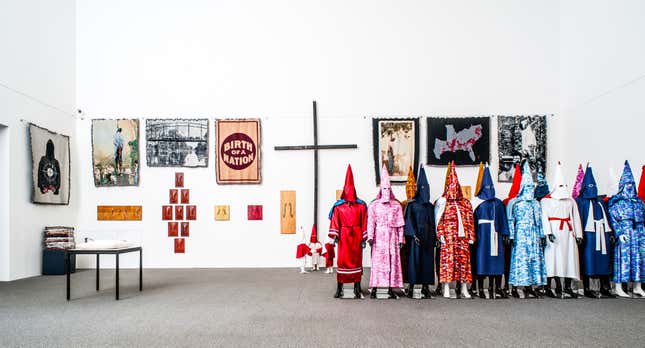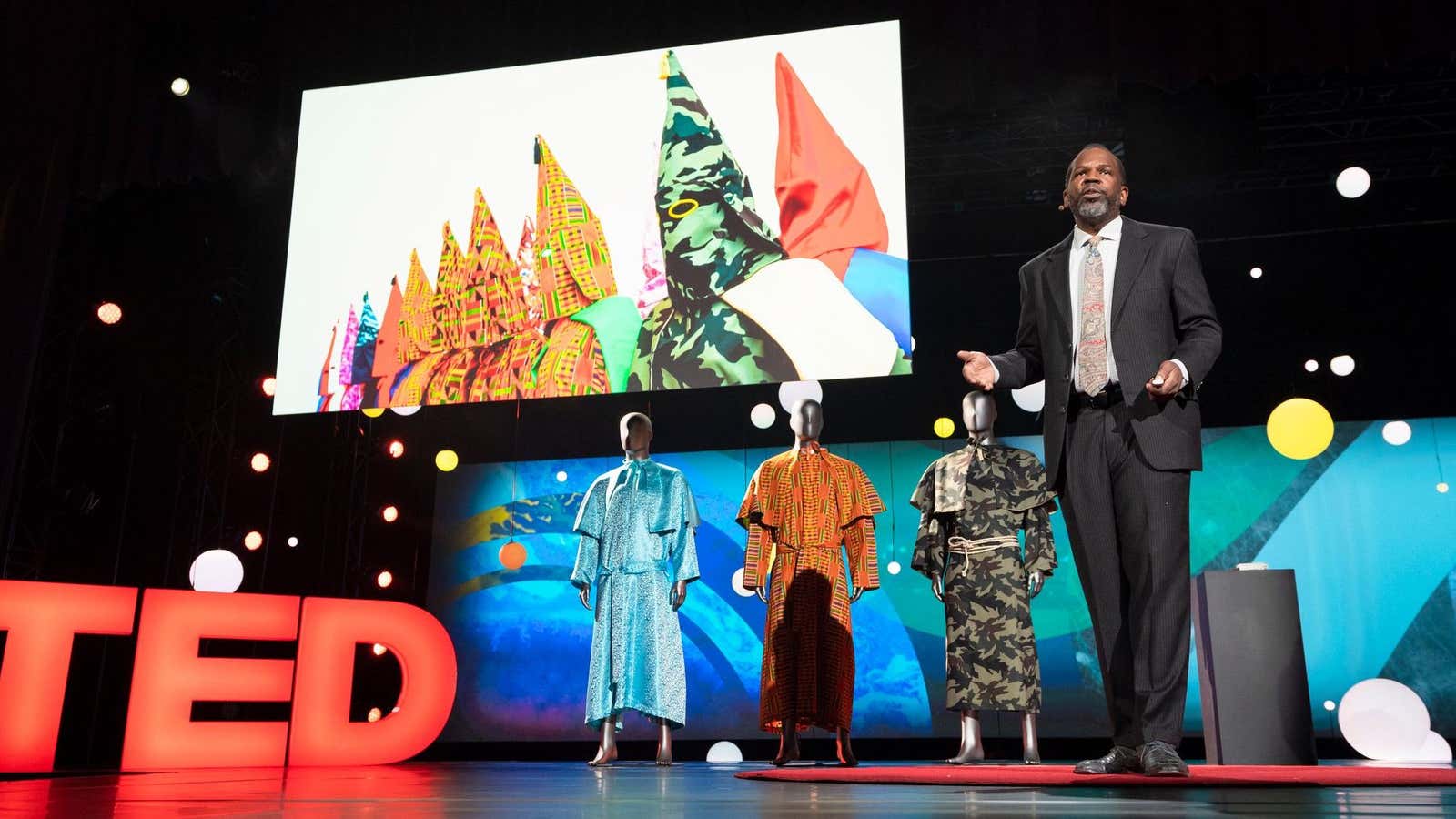Vancouver
Three robed mannequins evoking the Ku Klux Klan loomed over artist Paul Rucker as he spoke at a TED conference in Vancouver, British Columbia, on Monday (April 9). The 49-year-old multi-media artist collects and creates artifacts that underline the prevailing racism in American life.
“The basis of capitalism in America is slavery. Slaves were the capital,” said Rucker, who was named a TED Fellow this year. Decades after legal segregation ended in the US, racism is alive and well, he argued. In fact, racism is so deeply rooted in the design of laws, cities, and institutions that we hardly notice it. Rucker’s work gives a new interpretation of the “designs” surrounding racism.
As he placed the unmistakable pointed KKK hat on each mannequin’s head, Rucker revealed that the robes on stage were Klan regalia that he made. Recast in vibrant African kente cloths, silks, satin and patterned fabrics, the robes are beautiful as they are menacing. Rucker has made 75 bespoke versions of the so-called Klansmen “glory suit” as a way to wrestle with its sinister power, and with the memory of seeing KKK rallies in South Carolina where he grew up.

“I decided that I was going to make the best quality Klan robes in America,” said Rucker, who researched high-volume Klan robe factories in the state of Georgia. At the peak of the white supremacist movement in the early 1920s, the sewing factories operated 24/7, stocking 20,000 Klansmen robes on hand to keep up with the demand.
“After making so many robes, I realize that the Klan’s policies a hundred years ago are in place today …We’re not just dealing with the residue of racism, but it’s the basis of every single thing we do,” he said. In the US, racism figures into police brutality, voter suppression and lack of economic opportunities and political representation, Rucker explained. Racism is literally in the air: A 2018 US Environmental Protection Agency report on “environmental racism,” for instance, showed that black communities are disproportionately exposed to pollutants and breathe “fumes, smog, soot, oil smoke, ash, and construction dust,” which often lead to health issues.
“The stealth aspect of racism is part of its power,” said Rucker, standing before a robe made in camouflage cloth.

“White supremacy is there but the biggest force of white supremacy isn’t the KKK but the normalization of systemic racism,” he said. “If we look at systemic racism and acknowledge that it is sewn into the very fabric of who we are as a country, then we can do something about the intentional segregation in our schools, neighborhood and workplaces. Only then can we dismantle this ugly legacy of slavery.”
